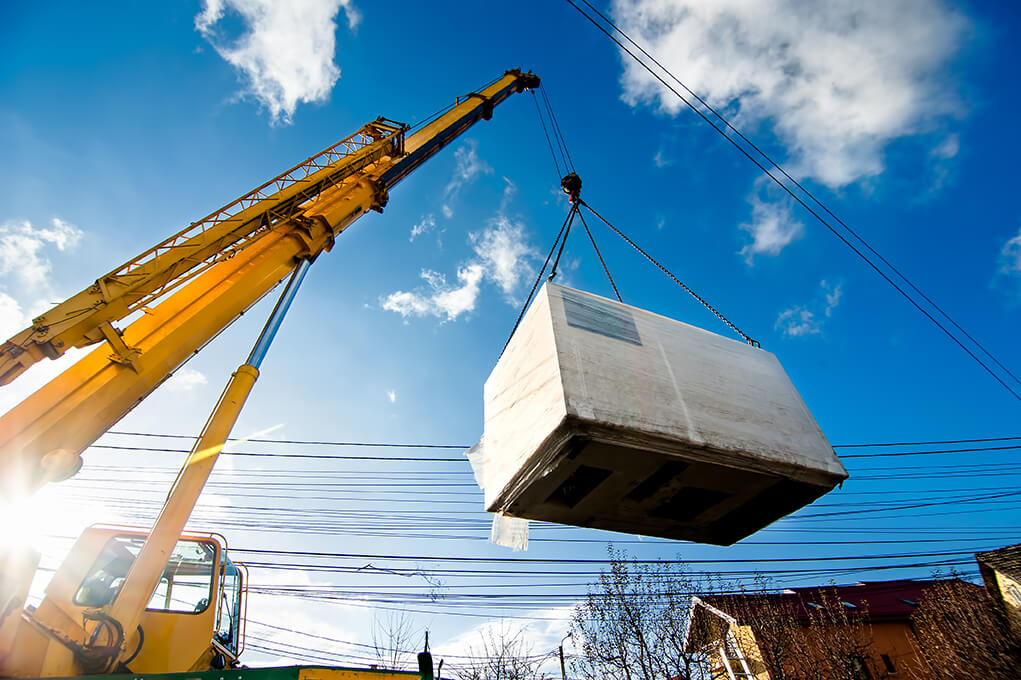Warnings, Definitions, and Cautions
Warnings, Definitions, and Cautions

Working Load Limit
The Working Load Limit (WLL) or Safe Working Load (SWL) is the maximum load which should ever be applied to the product under any condition. The Working Load Limit is based on a load being uniformly applied in a straight line pull.
Minimum Breaking Strength
Do NOT use Minimum Breaking Strength (MBS) for design or rating purposes. Use the Working Load Limit (WLL) instead. Minimum Breaking Strength is an average figure at which samples have been found to break under laboratory conditions in straight line pulls with constantly increasing loads. These conditions are rarely duplicated in actual use. The Minimum Breaking Strength applies to new and unused wire rod for Wire Rope, Aircraft Cable, and Chain.


Proof Load
The load a product can withstand during quality control test for the purpose of detecting defects and deformation in the material, usually twice the Working Load Limit.
Matching Components
All attachments used with chain and wire rope must be of suitable material, type and strength to provide adequate safety protection. Attachments should have Working Load Limits at least equal to the other components with which they are used.


Inspections Warning
No product can operate indefinitely at its rated capacity. Cable, wire rope, chain, and their attachments must be inspected regularly by a trained or qualified individual for visible damage, distortion, elongation, corrosion, cracks, nicks, or abrasion, which may cause failure or reduce the strength or ability of the product to perform safely.
Shock Loads
Loads which exceed the static caused by a rapid change of movement, such as jerking, impacting, or swinging of load. Working Load Limits will not apply.


Marking Requirements
The US Customs law requires that the end user of imported products be informed of the country of origin. All imported products sold by Advantage Sales & Supply are marked accordingly. Re-sellers are responsible to relay this country of origin information to the end user.
Warnings
- No product can operate indefinitely at its rated capacity.
- Avoid shock loads and side loads.
- Keep out from under a raised load.
- Never exceed the Working Load Limit.
- Inspect your rigging products regularly.

General Warnings & Cautions
All products supplied and manufactured by Advantage Sales & Supply are sold with the express understanding that the purchaser is thoroughly familiar with the safe and proper use and application of the product.
Responsibility for the use and application of the products rests with the user.
Failure of the product can occur due to misapplication, abuse, or improper maintenance. Product failure could allow the load to become out of control, resulting in possible property damage, personal injury or death.
There are numerous government and industry standards that cover products sold by Advantage Sales & Supply. This catalog makes no attempt to reference all of them. We do reference the standards that are most frequently asked about. Ratings shown in Advantage Sales & Supply literature are applicable only to new or “in as new” condition products. Load limit ratings indicate the greatest force or load a product can carry under usual environmental conditions. Shock loading and extraordinary conditions must be taken into account when selecting products for use in a system.
In general, the products displayed in Advantage Sales & Supply literature are used as parts of a system being employed to accomplish a task. Therefore, we can only recommend within the Working Load Limits, or other stated limitations, the use of products for this purpose.
The Working Load Limit, or Design Factor, or Efficiency Rating of each Advantage Sales & Supply-supplied product may be affected by wear, misuse, overloading, corrosion, deformation, intentional alteration, and other use conditions. Regular inspection must be conducted to determine whether use can be continued at the catalog assigned WLL, a reduced WLL, or whether the product must be withdrawn from service.
Advantage Sales & Supply products generally are intended for tension or pull. Side loading must be avoided, as it exerts additional force or loading which the product is not designed to accommodate.
Welding Advantage Sales & Supply-supplied load support parts or products can be hazardous. Knowledge of materials, heat treatment, and welding procedures are necessary for proper welding. Advantage Sales & Supply should be consulted for information.
The assigned Ultimate Load Rating of Advantage Sales & Supply-supplied products for the reeving of wire, manila, or synthetic ropes is based upon design; the catalog ultimate strength for the rope parts, when totaled, may exceed the assigned Ultimate Load Rating.
Limited Warranty
The Working Load Limit of a sling must not exceed the lowest Working Load Limit of the components in the system. Purchaser and Advantage Sales & Supply expressly agree that Advantage Sales & Supply’s warranty with respect to sale of its products is LIMITED solely to Advantage Sales & Supply’s choice of repair, replacement or refund of the purchase price of any product or part thereof determined by Advantage Sales & Supply to be defective within the first 12 months following the transfer of title of the product from Advantage Sales & Supply to the purchaser. Purchaser and Advantage Sales & Supply expressly agree that upon termination of the aforementioned 12 month period, the purchased product carries no warranty whatsoever. Purchaser and Advantage Sales & Supply expressly agree that the remedies provided in this section are the purchaser’s exclusive remedies in connection with the purchase or use of the product. Purchaser and Advantage Sales & Supply expressly agree that in no event shall Advantage Sales & Supply be liable for any incidental or consequential damages in connection with the purchase or use of the product.
ALL OTHER WARRANTIES, INCLUDING EXPRESS WARRANTIES OF MERCHANTABILITY AND FITNESS FOR A PARTICULAR PURPOSE ARE HEREBY DISCLAIMED. PURCHASER HEREBY WAIVES ALL OTHER WARRANTIES, RIGHTS AND REMEDIES ARISING BY LAW OR OTHERWISE INCLUDING, BUT NOT LIMITED TO, EXPRESS WARRANTIES, THE IMPLIED WARRANTY OF MERCHANTABILITY, ANY IMPLIED WARRANTIES ARISING FROM COURSE OF PERFORMANCE, COURSE OF DEALING OR USAGE OF TRADE, AND IMPLIED WARRANTY OF FITNESS FOR A PARTICULAR PURPOSE. ADDITIONALLY, Advantage Sales & Supply HEREBY DISCLAIMS ANY OF ITS OBLIGATIONS OR LIABILITIES ARISING FROM STATUTE, WARRANTY, CONTRACT, TORT OR NEGLIGENCE.
Complete Agreement: This Warranty between purchaser and Advantage Sales & Supply is complete. All prior or contemporaneous discussions, representations and/or understandings are merged into this Warranty. All prior or contemporaneous agreements between parties are superseded by this Warranty.
